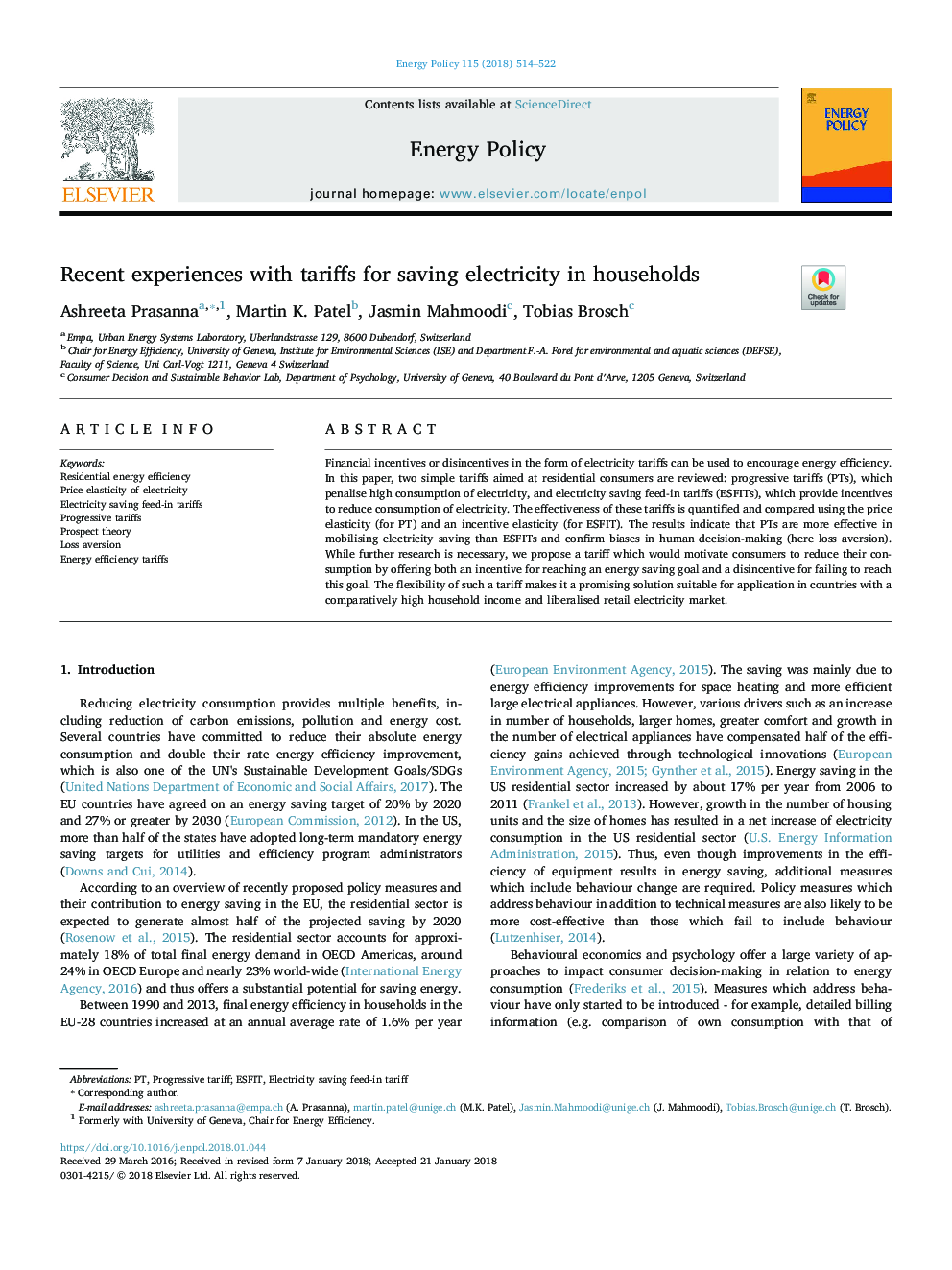| Article ID | Journal | Published Year | Pages | File Type |
|---|---|---|---|---|
| 7397611 | Energy Policy | 2018 | 9 Pages |
Abstract
Financial incentives or disincentives in the form of electricity tariffs can be used to encourage energy efficiency. In this paper, two simple tariffs aimed at residential consumers are reviewed: progressive tariffs (PTs), which penalise high consumption of electricity, and electricity saving feed-in tariffs (ESFITs), which provide incentives to reduce consumption of electricity. The effectiveness of these tariffs is quantified and compared using the price elasticity (for PT) and an incentive elasticity (for ESFIT). The results indicate that PTs are more effective in mobilising electricity saving than ESFITs and confirm biases in human decision-making (here loss aversion). While further research is necessary, we propose a tariff which would motivate consumers to reduce their consumption by offering both an incentive for reaching an energy saving goal and a disincentive for failing to reach this goal. The flexibility of such a tariff makes it a promising solution suitable for application in countries with a comparatively high household income and liberalised retail electricity market.
Related Topics
Physical Sciences and Engineering
Energy
Energy Engineering and Power Technology
Authors
Ashreeta Prasanna, Jasmin Mahmoodi, Tobias Brosch, Martin K. Patel,
